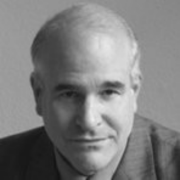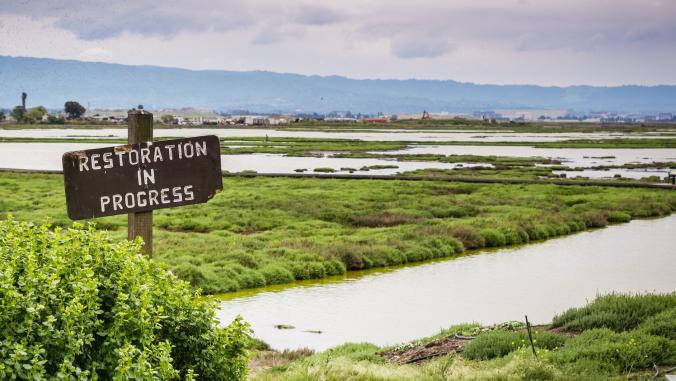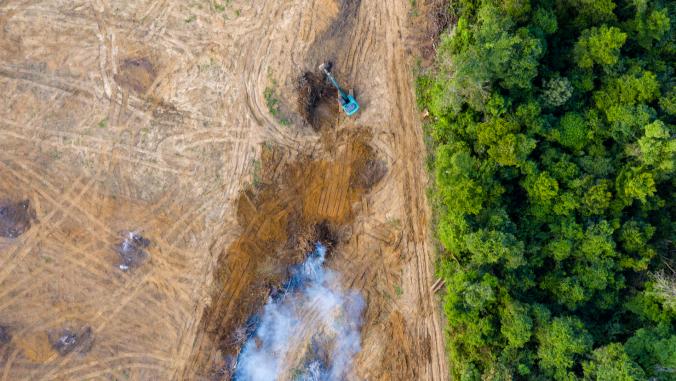Richard Sandor: Maker of Markets
Greenhouse gas emissions trading is gradually becoming a bona fide market, with the Chicago Climate Exchange (CCX) and the European Climate Exchange (ECX) establishing themselves as benchmarks in their respective areas. This article looks back on the career of Richard Sandor—the man who built them both.

Greenhouse gas emissions trading is gradually becoming a bona fide market, with the Chicago Climate Exchange (CCX) and the European Climate Exchange (ECX) establishing themselves as benchmarks in their respective areas. This article looks back on the career of Richard Sandor—the man who built them both.
Richard Sandor recounts with glee the fifth-graders from Glens Falls, NY, who decided to combat lung disease by buying and retiring sulfur dioxide allowances on the Chicago Board of Trade (CBoT). "The kids raised the money to buy the allowances by launching their own 'cap and trade' market for chewing gum allowances," he recalls. "When twelve-year olds proved their savvy at emissions trading, I knew no CEO or congressman could ever say they didn't get it."
What's more, those kids executed their trade ten years ago, when more evolved minds were still battling to keep emissions trading out of the Kyoto Protocol, an international agreement that assigns mandatory targets for emissions reductions to industrialized countries.
While emissions trading eventually found its way into the protocol, the United States did not. And so by 2002 Sandor was tapping into his personal savings and hitting up friends to get the Chicago Climate Exchange (CCX) off the ground as a platform for trading voluntary emission reductions.
Chicago Climate Exchange
Though perceived as a libertarian experiment to test the ability of market forces to drive down emissions without government intervention, CCX was, in fact, first conceived to provide the market-based mechanism for implementing government policy as North America's central platform for trading greenhouse gas emissions under a nationwide mandatory cap-and-trade regime.
Instead, its web site boasts its existence as "North America's only voluntary, legally binding rules-based greenhouse gas emission reduction and trading system." The exchange restricts trading to members who have voluntarily signed up to its mandatory reductions policy. During the pilot phase (2003-2006) members agreed to reduce greenhouse gas emissions 1% a year from a baseline determined by their average emissions during 1998 to 2001. The current goal (Phase II) is for members to reduce their total emissions by 6% below the baseline by 2010.
Like the carbon market in general, CCX trades six different types of GHGs converted to tCO2e. The majority of the credits are allowance-based, created by member companies internally reducing their emissions. Since its launch in late 2003, CCX's membership has grown from 19 institutions to over 131. Ford Motor, International Paper, IBM, American Electric Power, the City of Chicago, the City of Portland, the City of Oakland, the State of New Mexico, the World Resources Institute and the Rocky Mountain Institute are just a few of its wide range of members from the business, governmental and philanthropic sectors.
CCX traded 1.45 million tCO2e in 2005 for a total value of US $2.7 million, and trading prices spiked in the first quarter of 2006 when—according to sources—a U.S. Senator speculated that the U.S. might someday adopt CCX as its de-facto carbon trading scheme.
In 2005, CCX created the European Carbon Exchange (ECX), a joint venture with the International Petroleum Exchange (IPE, today ICE Futures) and currently the largest exchange trading carbon credits on the EU Emission Trading Scheme (see Creating a "Wall Street" for Carbon). This year, CCX has announced a flurry of new exchanges and joint ventures around the globe.
The Learning Curve
Sandor traces the genesis of CCX and its various subsidiaries and joint ventures to an epiphany he experienced in Geneva in 1991—a year after the Clean Air Act of 1990 had given the green-light for efficient companies to sell off their excess sulfur dioxide (SO2) allowances, and a year before the 1992 Earth Summit in Rio de Janeiro.
A towering figure in the world of derivatives, the former Stanford professor (who is still a research professor at Northwestern University) had been key in building the CBoT from the place where farmers hedged their corn to the place where Wall Street hedges its interest rate risk.
"I knew how to pioneer new markets," he says. "I had done it with financial futures when others thought that interest rates didn't fluctuate and there was no need to hedge. The challenge would require thousands of tasks, but all were feasible."
He and CBoT president Les Rosenthal began hitting up the best minds in finance, business, and government to hammer out a way of properly managing the market for SO2 allowances, and then entered into an agreement with the US federal Environmental Protection Agency (EPA) to manage their auctions.
"It was a pilot project, and had to be done right," he says. "If it weren't, the whole concept of emissions allowance trading could be sunk."
This exciting but risky pilot brought SO2 allowance auctions to the CBoT—the first-ever environmental contract of its kind. "We gained experience in trading, clearing and settling SO2 allowance trades," Sandor says. "We used trades to help finance pollution scrubbers installed by municipal power plants to reduce emissions."
But not everyone appreciated the efforts. "Successful auctions were often characterized by headlines such as 'Smut Traders' or 'Dirt Traders'," he recalls. "Marchers from Greenpeace chanted 'trading pollution is not the solution.'"
Sandor's next market was less controversial—and also less successful. "We developed markets for catastrophic insurance," he says. "Weather futures that facilitated hedging of hurricanes and tornadoes were developed. We also invented earthquake futures." Neither insurance nor weather futures managed to find the market Sandor envisioned, but the efforts gave him the contacts he needed inside the insurance industry to build the CCX.
The Lounge Act
Even with the experience he gained through CBoT's SO2 auctions and the contacts he acquired working in weather futures—not to mention his reputation as one of the most innovative minds in finance—Sandor says his early days promoting CCX were a long, hard slog. In fact, he calls his first years working on CCX his "lounge act" days. Shunned by the left for advocating market solutions and by the right for being too green, Sandor took every speaking engagement that came his way. "I was the environmental supplicant at industry meetings and seminars," he says. "It wasn't easy."
Despite the tough going, Sandor's lounge act helped him build a network of believers and converts—among them Paula DiPerna, whom he met at a United Nations conference in 1995 when she was a Costeau Society vice president. Five years later, DiPerna become president of the Joyce Foundation, which funded a feasibility study for a voluntary pilot program to trade greenhouse gases.
The idea was to give market participants a chance to do some proficiency trading before the United States joined Kyoto—a moment, of course, that never arrived. "In the midst of these intellectual challenges being met, the world as we knew it began to turn," Sandor recalls. "The US turned its back on Kyoto. Our efforts seemed dead." Nonetheless, a second grant from the Joyce Foundation carried CCX into 2002.
When the second grant ran out, Sandor began dipping into his own savings while ramping up the lounge act in order to persuade 14 companies to join the exchange. Today, Sandor credits Chicago's Mayor Richard M. Daly with rallying government support, and Brit Insurance CEO Neil Eckert with finding a way to raise cash without losing control. The London financier's idea: a closed-end investment company called Chicago Environmental, which was listed on the London Stock Exchange, making it possible for institutional investors to put their money into a listed company, which in turn invested in a private, non-listed company—CCX.
"We completed an $18 million dollar round of financing one week before the exchange opened," Sandor remembers. That was September, 2003, and within a year they had inked the deal with IPE to start up the European venture. ECX went live in 2005, the same year DiPerna, who'd quit the Joyce Foundation in 2002, joined CCX to handle corporate recruitment and public policy. Both exchanges treaded water but stayed afloat. In 2006, ECX volumes exploded as turmoil hit the European carbon markets (see Carbon Trading Passes Crash Test).
A Brave New World
Sandor won't say if CCX is making money yet or not, but it does seem to be announcing or implementing joint ventures almost monthly. In July, for example, they launched the Montréal Climate Exchange (MCeX) together with the Montréal Exchange, and in August, they signed an agreement with India's Energy and Resources Institute (TERI) to develop the greenhouse gas emission offset market there. Last year, CCX announced plans to launch two other exchanges—the Northeastern Climate Exchange (NECX) and the New York Climate Exchange (NYCX). Neither project has been finalized, as Sandor and his undisclosed regional partners try to gage the ultimate form the Regional Greenhouse Gas Initiative (RGGI) in the U.S. Northeast will take. "These things won't fly until 2009," he says. "Who knows what kind of national policy this country will be talking about then?"
Fresh from a whirlwind tour of China (see China Leads Developing World in CDM Rush), Sandor and ECX boss Peter Koster are working on an exchange-traded vehicle for offsetting the risk of project-based reduction allowances. "The challenge there is to make a fungible instrument that can act as a proxy for risk in non-standardized projects," he says. The solution will likely be some sort of index along the lines of the Chicago Mercantile Exchange's real estate futures, which launched earlier this year.
Needless to say, Sandor's lounge act is booked months in advance these days - and the crowds are usually standing room only. And those kids from New York? They should be getting their bachelor's degrees soon – and maybe a few will show up on Sandor's research team at Northwestern.
------------
Steve Zwick is a freelance journalist and Editor-at-Large of Futures Magazine. He can be reached at [email protected].
Reprinted with kind permission of Ecosystem Marketplace.
Richard Sandor recounts with glee the fifth-graders from Glens Falls, NY, who decided to combat lung disease by buying and retiring sulfur dioxide allowances on the Chicago Board of Trade (CBoT). "The kids raised the money to buy the allowances by launching their own 'cap and trade' market for chewing gum allowances," he recalls. "When twelve-year olds proved their savvy at emissions trading, I knew no CEO or congressman could ever say they didn't get it."
What's more, those kids executed their trade ten years ago, when more evolved minds were still battling to keep emissions trading out of the Kyoto Protocol, an international agreement that assigns mandatory targets for emissions reductions to industrialized countries.
While emissions trading eventually found its way into the protocol, the United States did not. And so by 2002 Sandor was tapping into his personal savings and hitting up friends to get the Chicago Climate Exchange (CCX) off the ground as a platform for trading voluntary emission reductions.
Chicago Climate Exchange
Though perceived as a libertarian experiment to test the ability of market forces to drive down emissions without government intervention, CCX was, in fact, first conceived to provide the market-based mechanism for implementing government policy as North America's central platform for trading greenhouse gas emissions under a nationwide mandatory cap-and-trade regime.
Instead, its web site boasts its existence as "North America's only voluntary, legally binding rules-based greenhouse gas emission reduction and trading system." The exchange restricts trading to members who have voluntarily signed up to its mandatory reductions policy. During the pilot phase (2003-2006) members agreed to reduce greenhouse gas emissions 1% a year from a baseline determined by their average emissions during 1998 to 2001. The current goal (Phase II) is for members to reduce their total emissions by 6% below the baseline by 2010.
Like the carbon market in general, CCX trades six different types of GHGs converted to tCO2e. The majority of the credits are allowance-based, created by member companies internally reducing their emissions. Since its launch in late 2003, CCX's membership has grown from 19 institutions to over 131. Ford Motor, International Paper, IBM, American Electric Power, the City of Chicago, the City of Portland, the City of Oakland, the State of New Mexico, the World Resources Institute and the Rocky Mountain Institute are just a few of its wide range of members from the business, governmental and philanthropic sectors.
CCX traded 1.45 million tCO2e in 2005 for a total value of US $2.7 million, and trading prices spiked in the first quarter of 2006 when—according to sources—a U.S. Senator speculated that the U.S. might someday adopt CCX as its de-facto carbon trading scheme.
In 2005, CCX created the European Carbon Exchange (ECX), a joint venture with the International Petroleum Exchange (IPE, today ICE Futures) and currently the largest exchange trading carbon credits on the EU Emission Trading Scheme (see Creating a "Wall Street" for Carbon). This year, CCX has announced a flurry of new exchanges and joint ventures around the globe.
The Learning Curve
Sandor traces the genesis of CCX and its various subsidiaries and joint ventures to an epiphany he experienced in Geneva in 1991—a year after the Clean Air Act of 1990 had given the green-light for efficient companies to sell off their excess sulfur dioxide (SO2) allowances, and a year before the 1992 Earth Summit in Rio de Janeiro.
A towering figure in the world of derivatives, the former Stanford professor (who is still a research professor at Northwestern University) had been key in building the CBoT from the place where farmers hedged their corn to the place where Wall Street hedges its interest rate risk.
"I knew how to pioneer new markets," he says. "I had done it with financial futures when others thought that interest rates didn't fluctuate and there was no need to hedge. The challenge would require thousands of tasks, but all were feasible."
He and CBoT president Les Rosenthal began hitting up the best minds in finance, business, and government to hammer out a way of properly managing the market for SO2 allowances, and then entered into an agreement with the US federal Environmental Protection Agency (EPA) to manage their auctions.
"It was a pilot project, and had to be done right," he says. "If it weren't, the whole concept of emissions allowance trading could be sunk."
This exciting but risky pilot brought SO2 allowance auctions to the CBoT—the first-ever environmental contract of its kind. "We gained experience in trading, clearing and settling SO2 allowance trades," Sandor says. "We used trades to help finance pollution scrubbers installed by municipal power plants to reduce emissions."
But not everyone appreciated the efforts. "Successful auctions were often characterized by headlines such as 'Smut Traders' or 'Dirt Traders'," he recalls. "Marchers from Greenpeace chanted 'trading pollution is not the solution.'"
Sandor's next market was less controversial—and also less successful. "We developed markets for catastrophic insurance," he says. "Weather futures that facilitated hedging of hurricanes and tornadoes were developed. We also invented earthquake futures." Neither insurance nor weather futures managed to find the market Sandor envisioned, but the efforts gave him the contacts he needed inside the insurance industry to build the CCX.
The Lounge Act
Even with the experience he gained through CBoT's SO2 auctions and the contacts he acquired working in weather futures—not to mention his reputation as one of the most innovative minds in finance—Sandor says his early days promoting CCX were a long, hard slog. In fact, he calls his first years working on CCX his "lounge act" days. Shunned by the left for advocating market solutions and by the right for being too green, Sandor took every speaking engagement that came his way. "I was the environmental supplicant at industry meetings and seminars," he says. "It wasn't easy."
Despite the tough going, Sandor's lounge act helped him build a network of believers and converts—among them Paula DiPerna, whom he met at a United Nations conference in 1995 when she was a Costeau Society vice president. Five years later, DiPerna become president of the Joyce Foundation, which funded a feasibility study for a voluntary pilot program to trade greenhouse gases.
The idea was to give market participants a chance to do some proficiency trading before the United States joined Kyoto—a moment, of course, that never arrived. "In the midst of these intellectual challenges being met, the world as we knew it began to turn," Sandor recalls. "The US turned its back on Kyoto. Our efforts seemed dead." Nonetheless, a second grant from the Joyce Foundation carried CCX into 2002.
When the second grant ran out, Sandor began dipping into his own savings while ramping up the lounge act in order to persuade 14 companies to join the exchange. Today, Sandor credits Chicago's Mayor Richard M. Daly with rallying government support, and Brit Insurance CEO Neil Eckert with finding a way to raise cash without losing control. The London financier's idea: a closed-end investment company called Chicago Environmental, which was listed on the London Stock Exchange, making it possible for institutional investors to put their money into a listed company, which in turn invested in a private, non-listed company—CCX.
"We completed an $18 million dollar round of financing one week before the exchange opened," Sandor remembers. That was September, 2003, and within a year they had inked the deal with IPE to start up the European venture. ECX went live in 2005, the same year DiPerna, who'd quit the Joyce Foundation in 2002, joined CCX to handle corporate recruitment and public policy. Both exchanges treaded water but stayed afloat. In 2006, ECX volumes exploded as turmoil hit the European carbon markets (see Carbon Trading Passes Crash Test).
A Brave New World
Sandor won't say if CCX is making money yet or not, but it does seem to be announcing or implementing joint ventures almost monthly. In July, for example, they launched the Montréal Climate Exchange (MCeX) together with the Montréal Exchange, and in August, they signed an agreement with India's Energy and Resources Institute (TERI) to develop the greenhouse gas emission offset market there. Last year, CCX announced plans to launch two other exchanges—the Northeastern Climate Exchange (NECX) and the New York Climate Exchange (NYCX). Neither project has been finalized, as Sandor and his undisclosed regional partners try to gage the ultimate form the Regional Greenhouse Gas Initiative (RGGI) in the U.S. Northeast will take. "These things won't fly until 2009," he says. "Who knows what kind of national policy this country will be talking about then?"
Fresh from a whirlwind tour of China (see China Leads Developing World in CDM Rush), Sandor and ECX boss Peter Koster are working on an exchange-traded vehicle for offsetting the risk of project-based reduction allowances. "The challenge there is to make a fungible instrument that can act as a proxy for risk in non-standardized projects," he says. The solution will likely be some sort of index along the lines of the Chicago Mercantile Exchange's real estate futures, which launched earlier this year.
Needless to say, Sandor's lounge act is booked months in advance these days - and the crowds are usually standing room only. And those kids from New York? They should be getting their bachelor's degrees soon – and maybe a few will show up on Sandor's research team at Northwestern.
------------
Steve Zwick is a freelance journalist and Editor-at-Large of Futures Magazine. He can be reached at [email protected].
Reprinted with kind permission of Ecosystem Marketplace.





